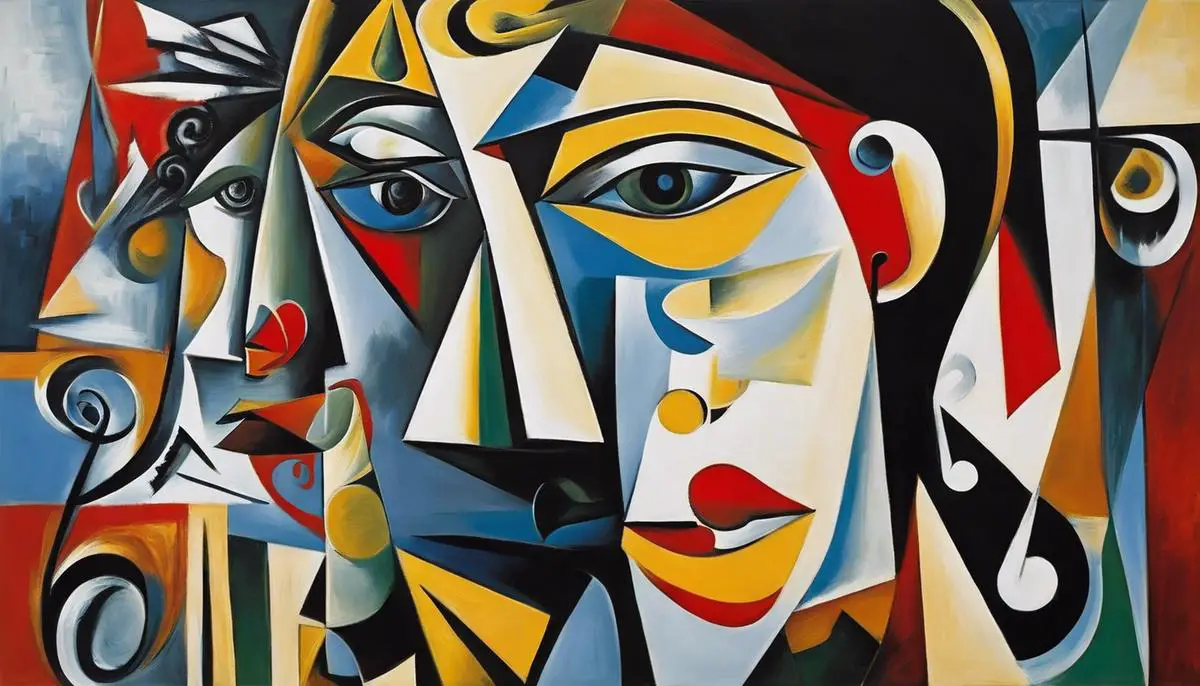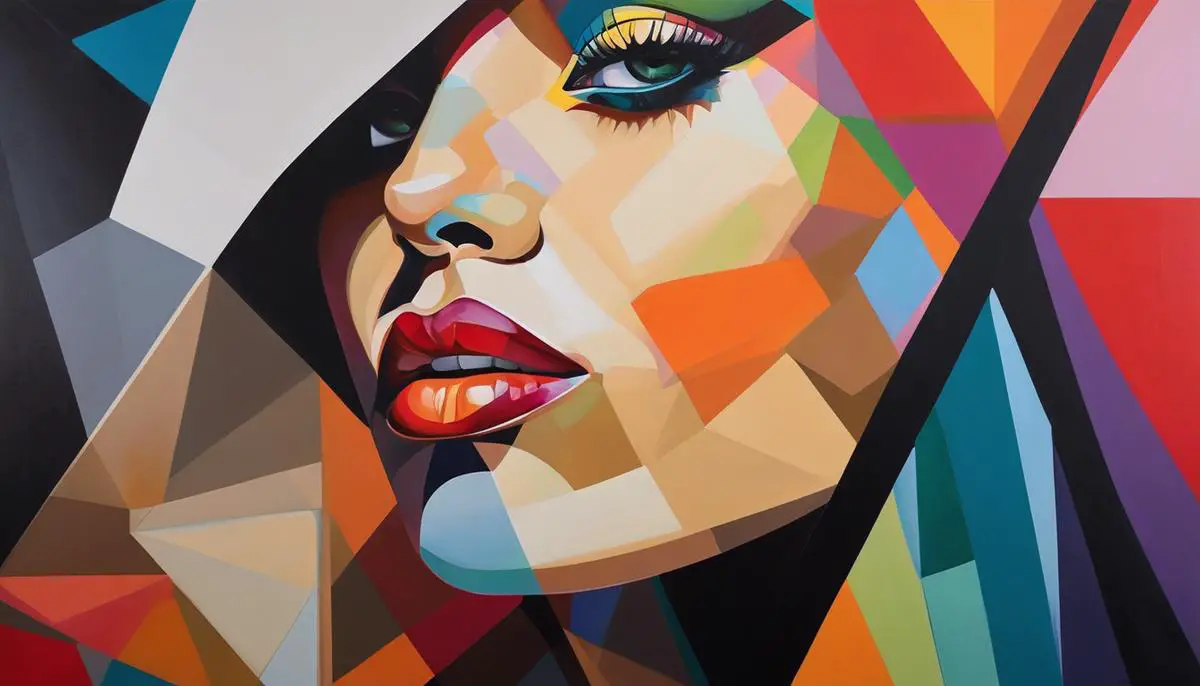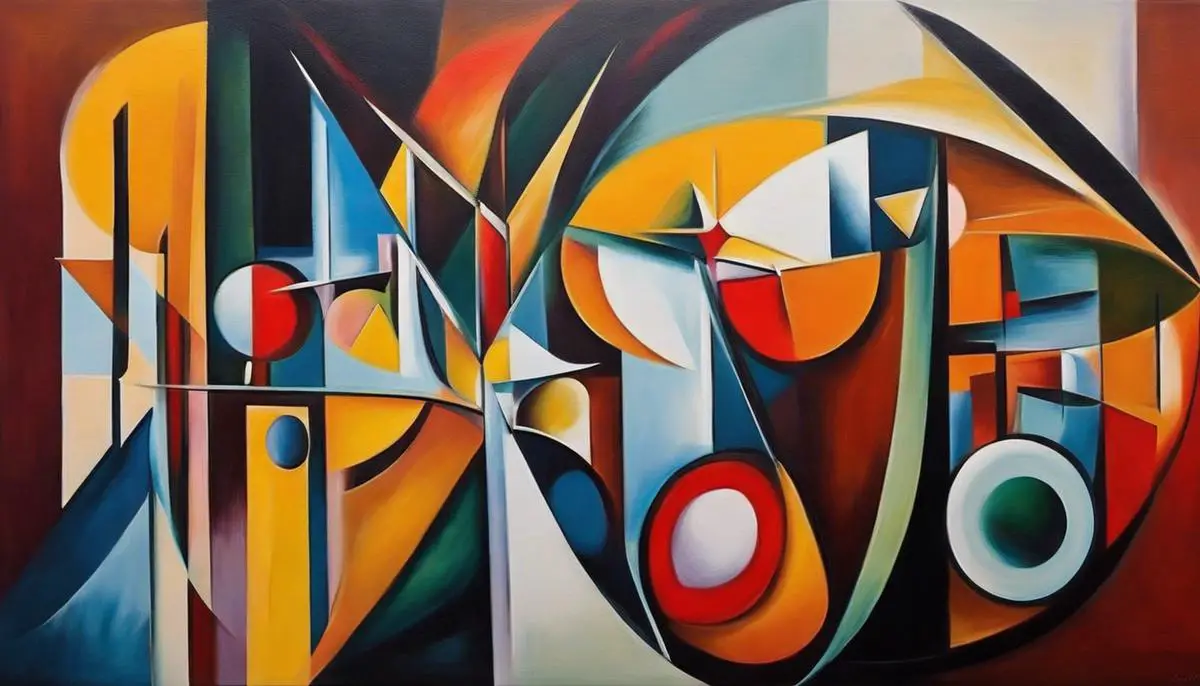There exist phrases and terms, floating on the cultural currents of time and space, which manage to transcend their linguistic homes, only to be embraced and ingrained into the psyche of a global audience. One such phrase is ‘Ma Jolie’, a French expression translating to ‘my pretty one’. Providing a buoy from the French language, this phrase has navigated through the waters of art, literature, and culture, positioning itself as an iconic representation of beauty, affection, and admiration. This exploration begins at the birthplace of ‘Ma Jolie’, voyaging through its evolution in art and literature, grasping its cultural significance, marking its influence on global language and finally anchoring at its manifestation in contemporary pop culture.
The Origins of ‘Ma Jolie’
Unravelling the Layers of ‘Ma Jolie’: A Masterpiece from Picasso
What is art if not the immaculate confluence of the artist’s emotions, preoccupations, and impressions of the world captured in visuals, colours, and textures? Truly, creativity’s resounding rhythm that echoes from the heart and throbbing fingers of an artist eventually finds its exulted manifestation on canvas. In the context of art, ‘Ma Jolie’ stands as a testimony of the artist’s vivid imaginations, deep emotions, and introspective gaze unto his life and surroundings. But what sets this piece apart is the innovative artistry of its creator – the enigmatic Pablo Picasso.
Cubism, a groundbreaking artistic movement of the early 20th century, is given its earliest full expression in ‘Ma Jolie’, one of Picasso’s seminal works. The artwork, composed during the analytical phase of cubism, is an amalgam of bold lines and entangled forms, fractured and skewed to create a unique perspective. It segues away from the norm of linear perspective and ventures into the brave new world of abstract form, offering multiple viewpoints at once. The seemingly fragmented and intricate pattern resonates with the pulsating rhythm of dance, vibrancy, and aesthetics.
The moniker ‘Ma Jolie’ translates from French to ‘My Pretty Girl’. The painting is believed to be a depiction of Picasso’s then-lover Marcelle Humbert, who had earned the affectionate sobriquet in their shared quarters. The song of the same name, popular at the time and a favourite of the couple, represents another layer to the personal significance imbued in the painting.
An interesting motif integrated into ‘Ma Jolie’ is the presence of musical notes from the popular tune which graced many Parisian cafes in the era. These notes embedded amidst the abstract forms add a rhythmic essence to the work, symbolising the bonding force of music in their lives. It also hints at the influence of African tribal art, which had begun to impact Picasso’s work, introducing him to the possibilities of fragmented and simplified form.
Arguably, ‘Ma Jolie’ is also a reflection of the evolving cultural landscape, serving as a commentary of the fast-paced modern life of the 20th century bustling with music, dance, and active café culture. Hence, while it is a love story immortalised on the canvas, it also doubles as a mirror to the socio-cultural aspects of the time.
In conclusion, the essence of ‘Ma Jolie’ lies not just in the figures, forms, and musical notation but in the deeper nuances of love, cultural change, and the throbbing heartbeat of an era. Picasso’s revolutionary viewpoint and creative process are what transform ‘Ma Jolie’ from a mere painting into an enduring symbol of love, music, and the transformative power of art. Understanding these elements enriches one’s appreciation of the painting and the artist’s genius. So, ‘Ma Jolie’ continues to fascinate and inspire, keeping Picasso’s creative heartbeat alive in the minds and hearts of art enthusiasts worldwide.

‘Ma Jolie’ in Art and Literature
<Article Begin>
Delving deeper into the creative realm of ‘Ma Jolie’, Picasso’s iconic work of art, we uncover layers of meaning and representation that set it apart, continuing our journey of exploration and appreciation.
One of the defining characteristics of ‘Ma Jolie’ is its melange of shapes, which has often been compared to our complex, fragmented modern life. This meaningful synchronicity is possible because of Picasso’s masterful application of the principles of Cubism. This radical artistic approach of presenting subjects from various perspectives simultaneously forced viewers to challenge their traditional perception of reality.
In addition to its characteristic aesthetic, ‘Ma Jolie’ holds another more literal significance that is established within its title. Named after a popular song of the time and Picasso’s pet name for his lover Marcelle Humbert, the title of the artwork is an artistic revelation of Picasso’s personal life. Though veiled in Cubist form, Picasso’s love and affection for Humbert are expressed subtly but clearly throughout the painting.
The element of music plays a substantial role in enhancing the aesthetic and symbolic depth of ‘Ma Jolie’. The music notes within the artwork not only represent Picasso’s love for music but also mirror a different aspect of the human condition, non-verbal communication. This inclusion of an auditory element within a visual medium, according to interpretations, acts as a metaphor for the direct communication of emotions without the filter of language, thus highlighting Picasso’s innovative and imaginative artistic vision.
An insightful reflection of the cultural landscape of Picasso’s time, ‘Ma Jolie’ encapsulates the modernist movement in early 20th century Europe. A revolutionary period on many socio-cultural fronts, Picasso’s work reciprocates the intellectual stratification, thus documenting a significant slice of art history.
The painting’s enduring significance lies not just in its role as a vanguard of Cubist art, but in its introspective revelation of the artist’s personal life and emotional state. ‘Ma Jolie’ acts as Picasso’s visual diary, testifying the merging of his personal with the political, simultaneously reflecting social power structures and refracting his private romantic feelings.
Thus, Picasso’s iconic ‘Ma Jolie’ is more than just an artwork; it’s an encapsulation of a personal journey interlaced with a reflection of societal transformation. It stands as a testament to the power and potential of art not just for its aesthetic appeal but its ability to provoke thought, incite dialogue and convey deep emotion.

The cultural significance of ‘Ma Jolie’
As we press onwards, it is crucial to acknowledge the societal impression that the masterpiece, ‘Ma Jolie’ has made since its creation in 1911. A splash of geometric visuals on muted colours, this invention by Picasso is no stranger to international recognition. Yet, its meaning and importance varies depending on the society interpreting it. In a sense, it has unfurled a linguistic maze of varied interpretations.
In its birthplace, Europe, ‘Ma Jolie’ resonates with a deep sense of the avant-garde. The European art circle, with its rich history of nurturing ground-breaking artists that shook the world, sees Picasso’s art as revolutionary. The artwork is considered a masterstroke of ingenuity. Picasso’s abstraction of features, his intricate play with light, and the inclusion of music through ghostly notations are held in high esteem.
Yet, as we shift our focus across the Atlantic to America, there lies a different interpretation. The United States has always been seen as the dreamland of ambition, where pioneering ideas are welcomed and celebrated. Here, ‘Ma jolie’ represents ambition, innovation, and the power of individuality. The Cubist masterpiece speaks to an inherent American value – the belief in the endless possibilities of personal expression and transformation.
Meanwhile, the African continent views the painting with a distinct lens of their own. Africa, with its rich tribal history, perceives ‘Ma Jolie’ as a reflection of their inherent cultural value of communality. Picasso, through his use of Cubism, reveals different perspectives united in a single frame. This resonates closely with the African ethos of ‘Ubuntu,’ or the belief in a universal bond of sharing that connects all.
Amidst the crowd of dazzling skyscrapers in Asia, ‘Ma Jolie’ often signifies the harmonious blend of tradition with innovation. Asia, home to some of the oldest civilizations steeped in tradition, sees ‘Ma Jolie’ as the melding of the old and new – Cubism’s revolutionary take on the world, integrated with Picasso’s own traditional artistic background.
Be it Europe, America, Africa, or Asia, ‘Ma Jolie’ employs an all-embracing aura. Each society lends a different shade to its interpretation, like a fascinating prism refracting a single beam of light into a myriad of colours. It reflects societal norms, histories, and perceptions, tying us all through the magnetic charm of art. It proves, without doubt, that art knows no boundaries. ‘Ma Jolie’, nearly a century after its creation, has grown into much more than just a painting. It stands as a testament to the profound unity in our collective diversity, mirroring the global audience that continues to debate, admire, and appreciate it, bringing us together through the cohesive language of art.

The influence of ‘Ma Jolie’ on global language
Moving forward, the captivating composition of ‘Ma Jolie’ has helped shape art styles worldwide, guiding future artists to see reality’s complexity beyond the grasp of traditional representation. The layering of Picasso’s work, where shapes meld into others, gave birth to an artistic ripple effect. The piece’s visual complexity disrupted the static nature of the European art scene, leading to an unstoppable Cubist wave. It also translated into dynamism within the American art scene, inspiring bold impressions and innovative forms. In essence, ‘Ma Jolie’ helped cement Picasso as a global titan of artistic innovation, translating his vision beyond a singular line of perception.
Often seen through African eyes, ‘Ma Jolie’ also invoked reflection on communality. African interpretations focus on the commonality of the angle, the unity of shapes, and shared understanding, seeing the piece as a symbol of collective life. Such interpretations have since influenced African contemporary art, bringing abstract cubism features to represent communal experiences.
Within the Asian experience, interpretations of ‘Ma Jolie’ reflect the seamless blend of innovation and tradition. This is where Picasso’s supreme craftsmanship is widely noted. The balance struck between the alien geometry of cubism and artistic poise is seen as an embodiment of the Asian philosophy– echoing ancient traditions and fostering innovation simultaneously. This reconciliation has become influential in contemporary Asian art, shaping new takes on traditional art forms.
Ultimately, ‘Ma Jolie’ acts as an artwork for all. It merely doesn’t reflect societal norms, histories, and perceptions; it harbours them within each stroke, revealing layers of cultural depth and insight. Continuing to provoke dialogue, incite thoughtful contemplation, and express profound emotion, ‘Ma Jolie’ transforms global understanding of art.
As the world gazes upon ‘Ma Jolie’, each viewer brings a personal interpretation, influenced by cultural backgrounds, societal norms, and individual perceptions. The common thread is the global appreciation of Picasso’s genius. In the ongoing debates and expressions of admiration, ‘Ma Jolie’ symbolises unity in diversity, transcending cultural boundaries and unifying us under the shared umbrella of human creativity and expression. It persists as a testament to Picasso’s power to change the world one painting at a time, making ‘Ma Jolie’ a truly global artwork.

‘Ma Jolie’ in Contemporary Pop Culture
Strolling through the timeline of art, ‘Ma Jolie’ continues to be a landmark, holding a vantage point in the chronicles of creative expression. As we delve deeper into its essence, the influence of this Picasso masterpiece on contemporary popular culture, across the globe, becomes more evident.
The geometric disorder depicted in ‘Ma Jolie’ seems symbolic of today’s netizens’ digital world. On screen, we shuffle between app windows, split screens, and fragmented information, mirroring the Cubist fragmentation in ‘Ma Jolie’. Similarly, the integration of tablature in the artwork resonates with today’s multi-sensory visual culture, where lyrics in music videos or stylised captions on social media extend the narrative beyond the image.
Moreover, the artwork’s essence of a ‘beautiful chaos’ reverberates in pop culture’s fascination with complexity. Just like ‘Ma Jolie’, pop music albums, Hollywood blockbusters, even fashion styles are often a collage of diverse elements. They layer contradicting patterns, vibrant hues, and varying textures, indulging the viewer in a maze much like the Cubist labyrinth Picasso painted.
Across the vast spectrum of global pop culture, ‘Ma Jolie’ continues to inspire narratives. For instance, the European film and music industry, renowned for its avant-garde spirit, honours the revolutionary ethos inherent in ‘Ma Jolie’. In America, the artwork’s aesthetic is mirrored in their art scene’s celebration of individualism; creatives frequently experiment with bold, unconventional styles and dynamic expressions.
In Africa, ‘Ma Jolie’ resonates with pop culture’s emphasis on community. Its symbolism is replicated in African cinematography, literature, and music which often represent stories of communal life and shared experiences. Meanwhile, in Asia, the fusion of tradition with innovation in the anime industry, K-pop culture, or the cuisine landscape is reminiscent of the harmonious blend ‘Ma Jolie’ embodies.
‘Ma Jolie’ transcends geographical boundaries and cultures, echoing Picasso’s genius in pop culture globally. Its enduring relevance is a testimony to the universal language of art; it unites diverse stories, much like the role pop culture plays in fostering global unity amidst diversity. Undeniably, this artwork’s presence is evident in every brushstroke in the canvas of pop culture, unravelling the beauty in chaos that Picasso so eloquently portrayed. Indeed, ‘Ma Jolie’ continues to weave the world together in its fragmented symphony.

To truly understand ‘Ma Jolie’, one must dive into the cornucopia of contexts in which it prevails; from Picasso’s canvas to the refrains of pop music. Recognised across geographical borders, whispered in the corridors of diverse cultures and reflected in the mirror of global language, the voyage of ‘Ma Jolie’ is not simply a story of a phrase; rather it is a testament to the inherent ability of language to evolve, inspire and inform. As a cultural icon, the phrase ‘Ma Jolie’ continues its journey, sowing seeds of creativity, resonating with beauty, and encapsulating the essence of affection. Its journey, akin to an unfolding narrative, is emblematic of how words can cross barriers, build bridges and create dialogue, all while retaining their elemental charm and allure.
Recommend0 recommendationsPublished in Uncategorized





Responses